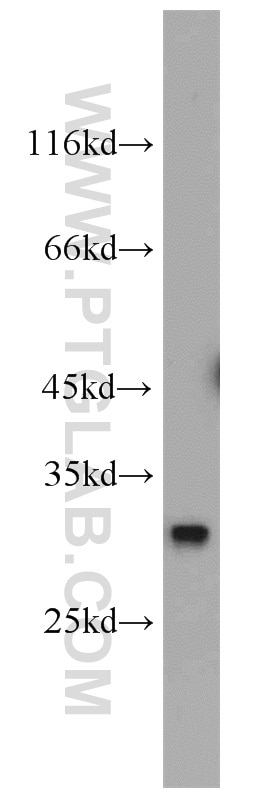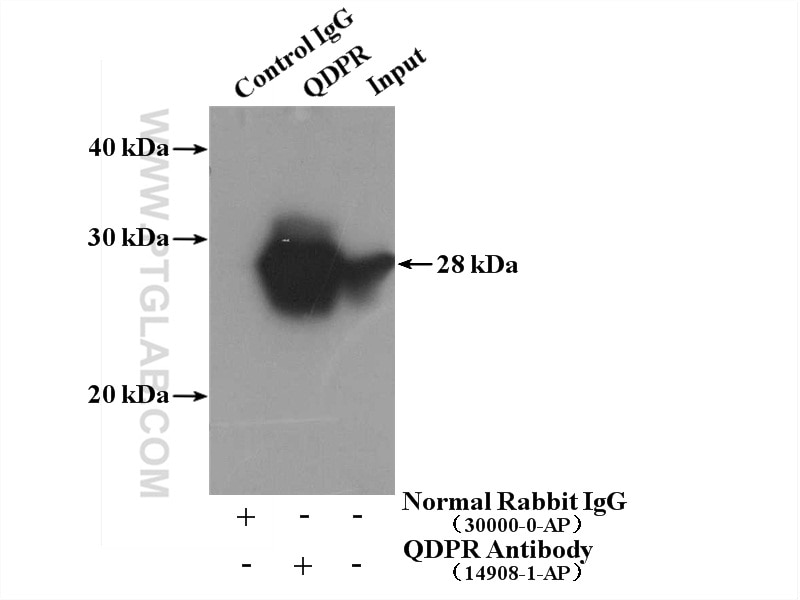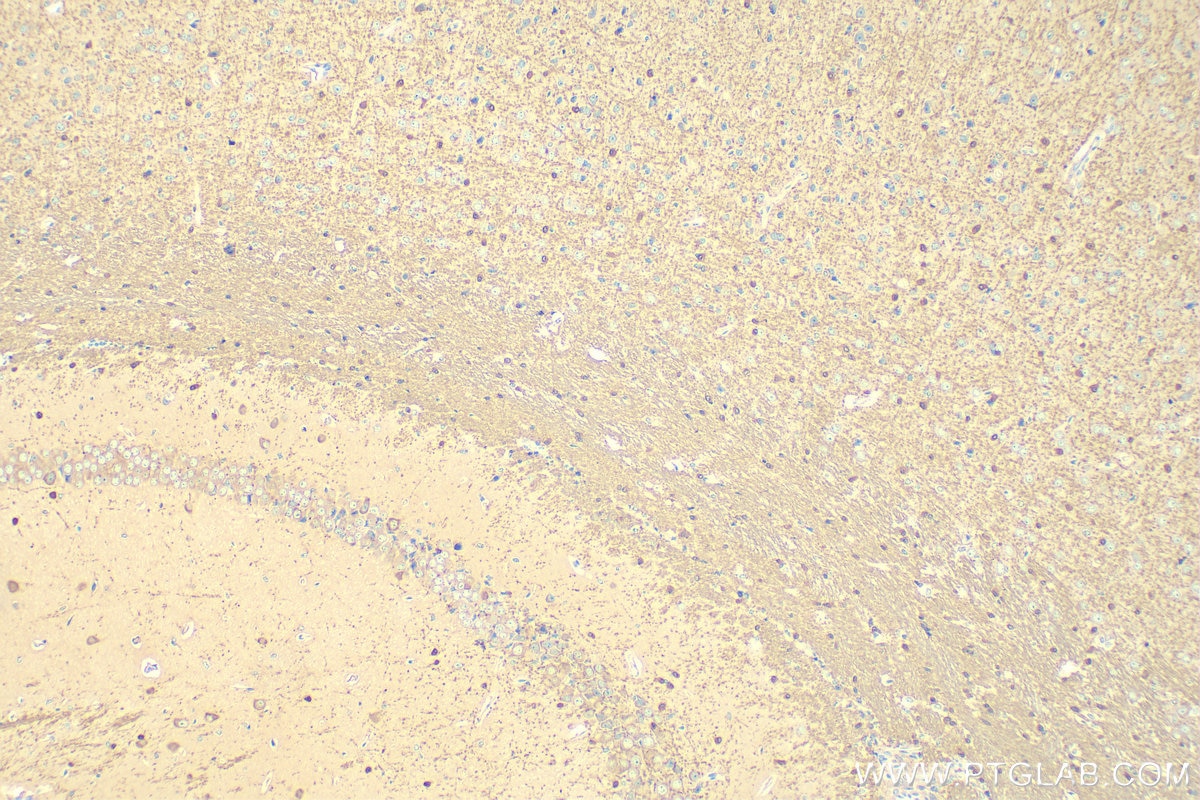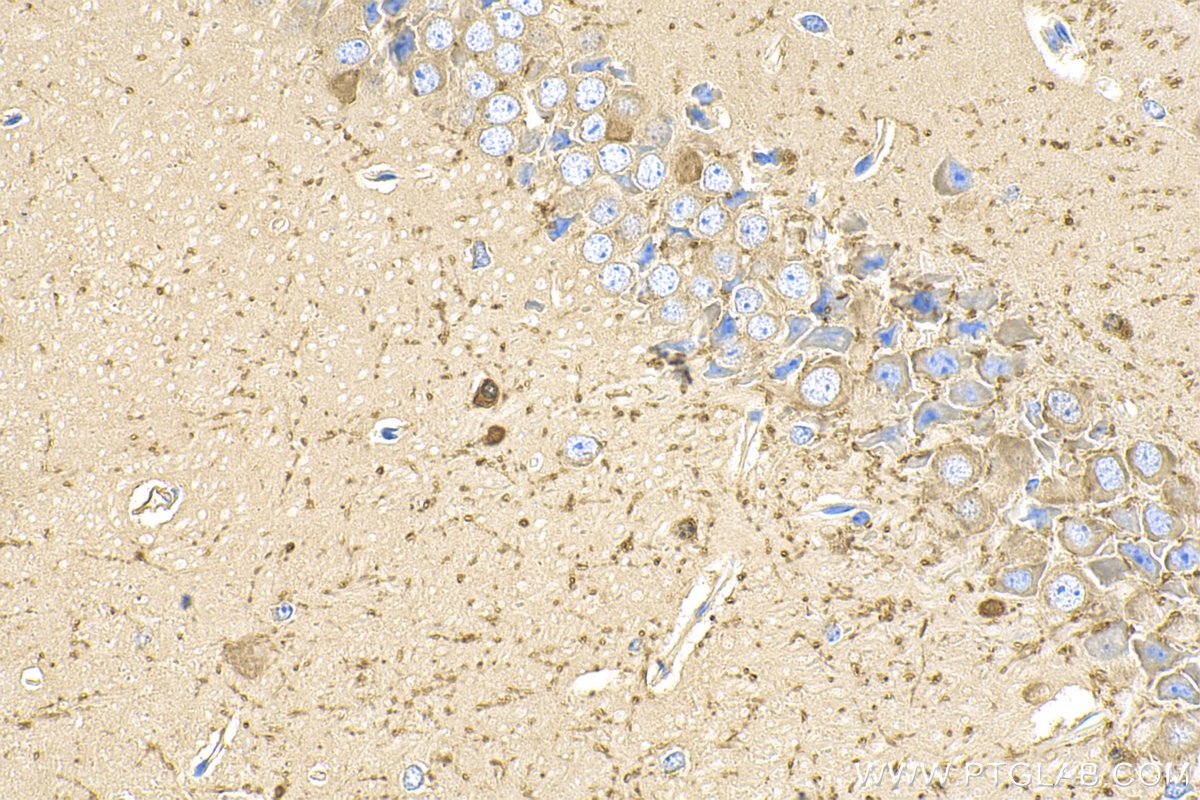QDPR Polyklonaler Antikörper
QDPR Polyklonal Antikörper für WB, IP, IHC, ELISA
Wirt / Isotyp
Kaninchen / IgG
Getestete Reaktivität
human, Maus, Ratte
Anwendung
WB, IHC, IF, IP, ELISA
Konjugation
Unkonjugiert
Kat-Nr. : 14908-1-AP
Synonyme
Geprüfte Anwendungen
| Erfolgreiche Detektion in WB | Mauslebergewebe, humanes Lebergewebe |
| Erfolgreiche IP | Mauslebergewebe |
| Erfolgreiche Detektion in IHC | Maushirngewebe Hinweis: Antigendemaskierung mit TE-Puffer pH 9,0 empfohlen. (*) Wahlweise kann die Antigendemaskierung auch mit Citratpuffer pH 6,0 erfolgen. |
Empfohlene Verdünnung
| Anwendung | Verdünnung |
|---|---|
| Western Blot (WB) | WB : 1:500-1:2000 |
| Immunpräzipitation (IP) | IP : 0.5-4.0 ug for 1.0-3.0 mg of total protein lysate |
| Immunhistochemie (IHC) | IHC : 1:50-1:500 |
| It is recommended that this reagent should be titrated in each testing system to obtain optimal results. | |
| Sample-dependent, check data in validation data gallery | |
Veröffentlichte Anwendungen
| WB | See 5 publications below |
| IF | See 1 publications below |
Produktinformation
14908-1-AP bindet in WB, IHC, IF, IP, ELISA QDPR und zeigt Reaktivität mit human, Maus, Ratten
| Getestete Reaktivität | human, Maus, Ratte |
| In Publikationen genannte Reaktivität | human, Maus |
| Wirt / Isotyp | Kaninchen / IgG |
| Klonalität | Polyklonal |
| Typ | Antikörper |
| Immunogen | QDPR fusion protein Ag6705 |
| Vollständiger Name | quinoid dihydropteridine reductase |
| Berechnetes Molekulargewicht | 26 kDa |
| Beobachtetes Molekulargewicht | 28-30 kDa |
| GenBank-Zugangsnummer | BC000576 |
| Gene symbol | QDPR |
| Gene ID (NCBI) | 5860 |
| Konjugation | Unkonjugiert |
| Form | Liquid |
| Reinigungsmethode | Antigen-Affinitätsreinigung |
| Lagerungspuffer | PBS with 0.02% sodium azide and 50% glycerol |
| Lagerungsbedingungen | Bei -20°C lagern. Nach dem Versand ein Jahr lang stabil Aliquotieren ist bei -20oC Lagerung nicht notwendig. 20ul Größen enthalten 0,1% BSA. |
Hintergrundinformationen
Dihydropteridine reductase (QDPR), also named as DHPR and HDHPR, is an essential enzyme in the hydroxylating system of the aromatic amino acids, since it catalyses the regeneration of tetrahydrobiopterin (BH4), the natural cofactor of phenylalanine, tyrosine, and tryptophan hydroxylases, from the quininoid-dihydrobiopterin produced in these coupled reactions(PMID:8326489). The QDPR protein is active as a dimer, with a subunit Mr of 26 kDa(PMID:7627180). This protein belongs to the short-chain dehydrogenases/reductases (SDR) family. Defects in QDPR are the cause of BH4-deficient hyperphenylalaninemia type C (HPABH4C)(PMID:11153907).
Protokolle
| PRODUKTSPEZIFISCHE PROTOKOLLE | |
|---|---|
| WB protocol for QDPR antibody 14908-1-AP | Protokoll herunterladen |
| IHC protocol for QDPR antibody 14908-1-AP | Protokoll herunterladenl |
| IP protocol for QDPR antibody 14908-1-AP | Protokoll herunterladen |
| STANDARD-PROTOKOLLE | |
|---|---|
| Klicken Sie hier, um unsere Standardprotokolle anzuzeigen |
Publikationen
| Species | Application | Title |
|---|---|---|
Glia Developmental maturation and regional heterogeneity but no sexual dimorphism of the murine CNS myelin proteome | ||
Mol Autism RNA sequencing and proteomics approaches reveal novel deficits in the cortex of Mecp2-deficient mice, a model for Rett syndrome. | ||
Front Mol Neurosci Broad Influence of Mutant Ataxin-3 on the Proteome of the Adult Brain, Young Neurons, and Axons Reveals Central Molecular Processes and Biomarkers in SCA3/MJD Using Knock-In Mouse Model. | ||
Genes Genomics Subproteomic profiling from renal cortices in OLETF rats reveals mutations of multiple novel genes in diabetic nephropathy. | ||
Sci Rep Identification and validation of diagnostic biomarkers for temporal lobe epilepsy related to ferroptosis and potential therapeutic targets |
Rezensionen
The reviews below have been submitted by verified Proteintech customers who received an incentive for providing their feedback.
FH Hua (Verified Customer) (01-20-2023) | Very good antibody.
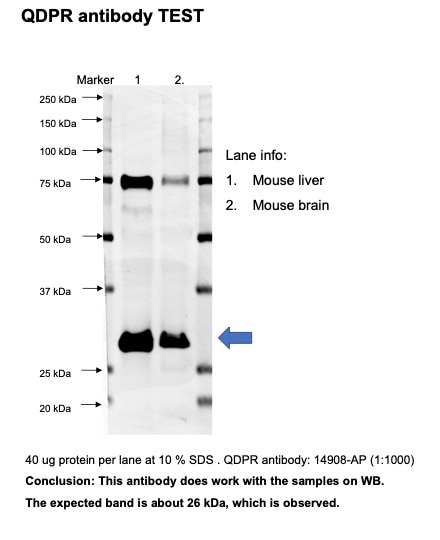 |
